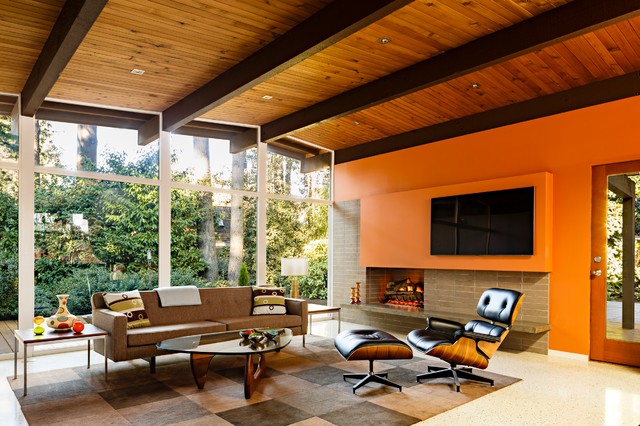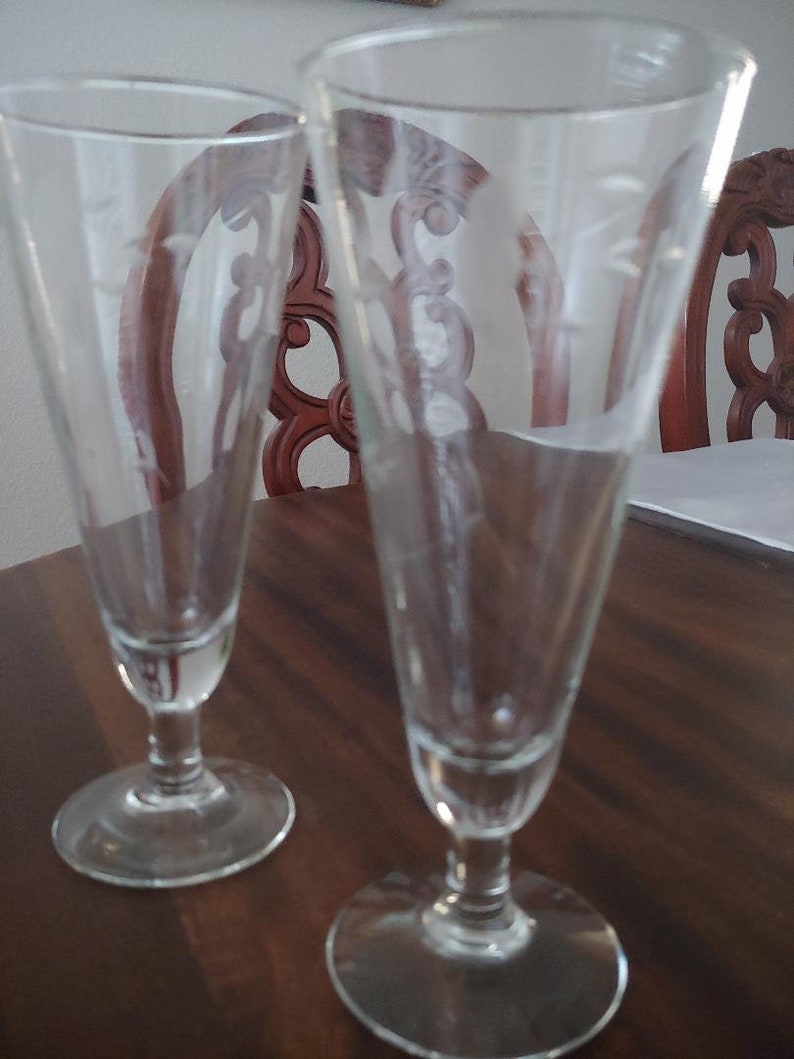Table Of Content

Nina Garbiras drew attention to the industrial elements of this New York City loft with the ceiling light, then brought in contemporary furniture to complement it. If names like Eames and Bertoia and Wegner get you excited, scroll on to see designer midcentury modern living rooms that will persuade you to give in and fully embrace the aesthetic. Midcentury modern can be considered a subset of modern design, defined as the style that became popular in the early 1900s. However, when compared to the traditional definitions of modern design, midcentury modern design tends to be unashamedly retro and often makes use of bright accent color to emphasize this point. Modern design, by contrast, typically has a more understated, utilitarian, industrial look. Midcentury modern style defined the mid-20th century—simple, functional wooden pieces made from teak and curved designs reigned supreme.
$1.8M restored Marcel Breuer house on the Hudson has kept its mid-century modern spirit intact - 6Sqft
$1.8M restored Marcel Breuer house on the Hudson has kept its mid-century modern spirit intact.
Posted: Thu, 18 Apr 2024 19:02:38 GMT [source]
Characteristics of Mid-Century Style, And How To Use Them
Many midcentury furniture design companies like Knoll, Herman Miller (think George Nelson), Vitra, etc. offer mid-century modern furniture to suit different themes. When it comes to incorporating mid-century modern design in your home, the first step is to "research and familiarize yourself with the iconic designers, furniture pieces and architectural styles of the era," advises Sims. Understanding the principles that guided mid-century design will not only provide inspiration but also a framework for you to start with. Mid-century modern spaces often feature bold patterns, and a harmonious balance between form and function. At its core, mid-century modern design represents a departure from the ornate and excessive styles that dominated the early 20th century. Instead, it embraces a more pared-down approach, focusing on creating open, light-filled spaces that seamlessly integrate with the natural environment.

Organic and geometric shapes
We've talked a lot about how mid-century interiors are all about form and shapes and unusual materials. This can make for very unique pieces that can at first appear tricky to style if you want to really embrace this aesthetic but still keep your space liveable. In the living room of the Goldwyn house, an iconic residence in Los Angeles that’s now the home of the Future Perfect gallery, a jewel-toned lounge is swathed in velvet and overseen by a handwoven rattan chandelier by artist Chris Wolston.
Motley Design Warehouse
The conversation pit is a fixture in midcentury design, so adding in a space to your living room that encourages human connection is essential to truly capture the aesthetic. This isn't technically a pit, but Rodney Lawrence mimicked one with this oversize sectional. A vast record collection is only appropriate for someone who loves midcentury modern, so be sure to own it and put your records on display. Moore called this room a "disco library lounge" and had it double as a lively, music-filled family room.
'I am a firm believer that in every era there is incredible design and I pull from lots of different periods – I love mixing deco, Bauhaus, mid-century; sticking to one era can be a bit one note,' adds interior designer Kelly Weastler. Here, the warm neutrals used as the main structure for this living room color scheme are very much back in vogue. Earthy naturals, pale plaster pinks and natural weaves all set the scene elegantly, and provide an ideal backdrop for the addition of a few joyful primary colors. This green living room is bold sure, but there's also something so serene about it. The clashing colors, don't seem to clash at all in this space, they feel soft and inviting.
Artem is the founder of Arsight, an esteemed global design firm known for its expertise in residential and commercial interior design. Mid-century modern is a term used to describe design and architecture – like the mid-century modern home – from the middle decades of the 20th century. The designs of the period aren’t homogenous, but they do have qualities in common. This is the latest in our series of lookbooks providing curated visual inspiration from Dezeen's image archive. For more inspiration see previous lookbooks showcasing home libraries, minimalist bedrooms and Shaker-style interiors. Sculptural furniture is displayed against a backdrop of walnut panelling that wraps the apartment.
12 Design Aesthetics We'd Love To See Dominate 2024 (And How To Pull Them Off) - House Digest
12 Design Aesthetics We'd Love To See Dominate 2024 (And How To Pull Them Off).
Posted: Mon, 05 Feb 2024 08:00:00 GMT [source]
Big, flat-paneled windows and homes integrated with their surroundings are common of mid-century modern design. Bringing natural elements indoors, from the raw materials of the pieces to living houseplants as decor, is a great way to emulate this timeless look. Though wood and wood veneer are typical elements of mid-century modern style, designers of the time did a fair amount of experimentation with other materials that were new to the era like plastic, formica, and acrylic. As such, don’t be afraid to mix and match organic and synthetic materials to create a mid-century modern look. The use of natural materials is one of the key tenets of mid-century modern design.
Now, we see many replicas of midcentury modern furniture on the market, but the real deal is still extremely popular (and valuable!), too. Midcentury modern living rooms look as current today as they did a century ago. Equal parts stylish and functional, midcentury modern aesthetics are largely defined by a less is more philosophy, with clean lines, wood finishes, an emphasis on maximizing natural light, and a connection to the outdoors. In a mid-century modern living room, you will find furniture with hairpin legs that add character to your home decor. Low seating, lounges that allow you to cocoon, shell chairs made from plastic, and consoles that have plain surfaces with punctuations that add character, are hallmarks of the mid-century modern design furniture.
Whether it's a vibrant geometric rug or an abstract wallpaper, these patterns become focal points in the space, adding visual interest and creating a sense of energy and movement. “Mid-century modern design makes use of a variety of materials, often highlighting their natural qualities or sleek finishes,” adds Amanda Sims. The use of such materials enhances the overall aesthetic appeal, making the design feel more authentic and grounded. To style a mid-century modern living room, invest in unfussy, utilitarian-style furniture. Opt for functional, fluid furniture and abstract prints based on natural shapes – rediscovered and reinterpreted for today’s modern interiors and lifestyles. 'I love the clean architectural lines of my brownstone living room in Cobble Hill, Brooklyn.
A large, open, galley-style kitchen and mirrored planes of wall paneling visually expand the home's interior perspective. “Overall, the enduring appeal of Mid Century Modern design is a testament to its enduring beauty and functionality,” adds Robin DeCapua. For ideas, look to icons like Florence Knoll and Arne Jacobson for inspiration – both of whom were prominent designers during the mid-century modern period. Their work still serves as design inspiration for some of the world’s top creatives. 'The mission was to blend the clean lines of a 1950’s California style-home with a rich and dense decor but to also play with – even upend – preconceived notions of what a mid-century ought to be,' he notes.
Weekly updates on the latest design and architecture vacancies advertised on Dezeen Jobs. Daily updates on the latest design and architecture vacancies advertised on Dezeen Jobs. This 1950s house in the Pacific Northwest was originally built for cartoonist Irwin Caplan.
The key to making the aesthetic look decidedly non–Brady Bunch is understanding its history and creating an effortlessly modern mix. Learn all about it and get tips from the experts on how to add a Mad Men vibe to your space with midcentury-modern decor. The lines, materials, and color palettes of mid-century modern interior design differentiate the style from what had gone before. "This project has been inspired from the interior design of mid-century American and Brazilian modernist uses of warm dark natural materials and wooden wall panelling, lush carpets and tactile upholstery," designer Keiji Ashizawa told Dezeen. Though it's a more modern interpretation, this part of the home still shows Robert Lawrence's midcentury inspiration in its layering of clean lines, from the hanging shelves to the geometric shapes of the side table.
Freeform furniture and biomorphic shapes were big towards the end of the mid-century era (think the Noguchi glass coffee table). No matter what vein of mid-century modern you are going with, curated and considered is always a must. Any decorative pieces you do bring in ensure they have a home, like on shelving or a mantel, and look for organic, curved shapes – handblown glass pieces and quirky ceramics are perfect for injecting a retro vibe.
With so much talk of simplicity and minimalism, one needs to balance the aesthetics with a pop of colour. Whether be it monochrome shades or bold usage of neon shades which bring cheer and vibrancy to the room, one needs to be brave enough to experiment with choices but keep it limited to the focal piece and not splatter it about the room. What sets the Mid-Century Modern Style distinctly apart from its predecessors, is the usage of hitherto unconventional material which were mass produced and hence much more economical.













